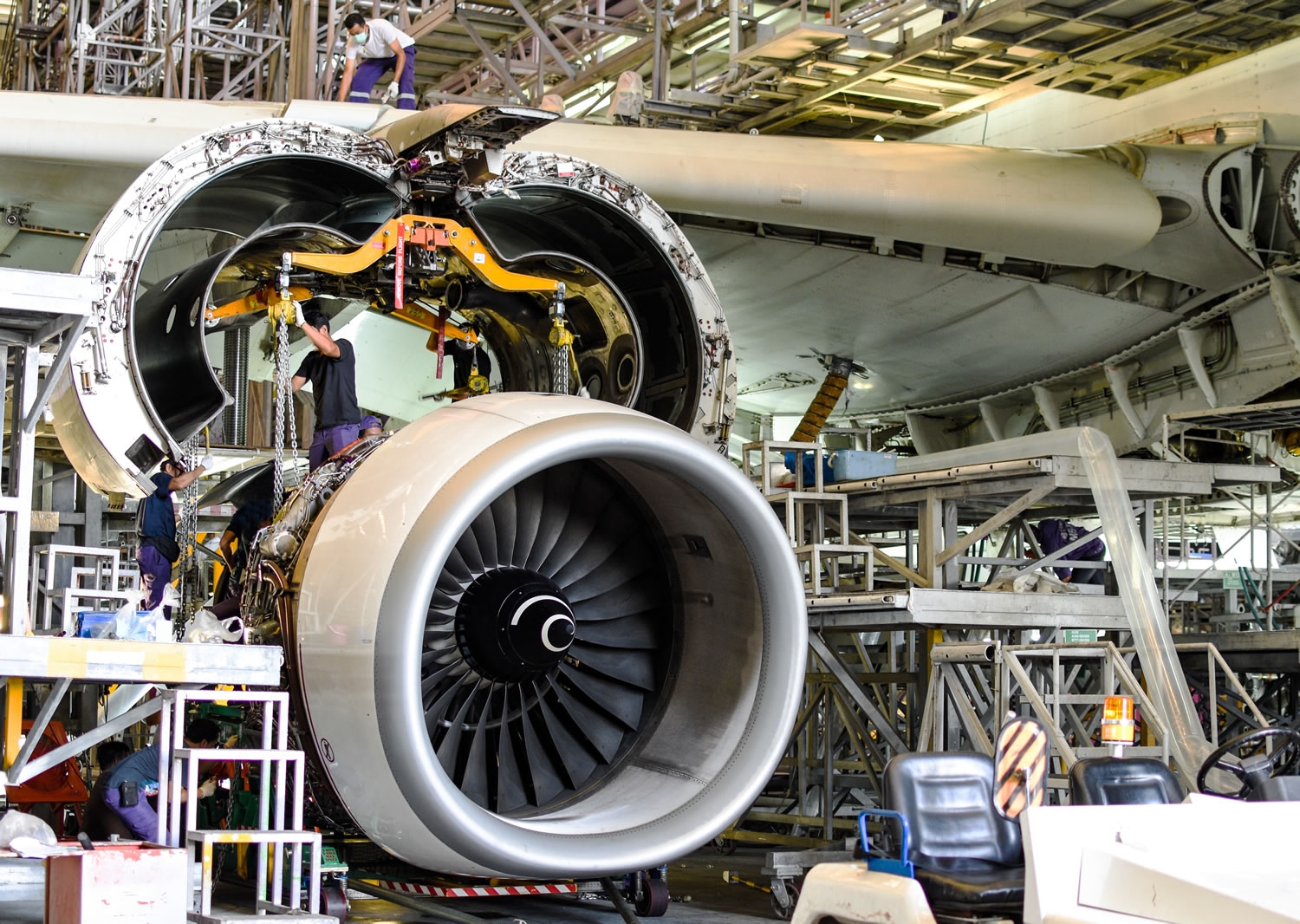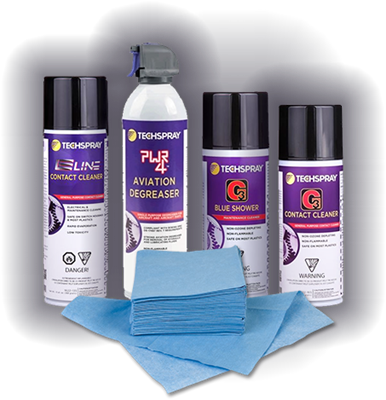One of the dirtiest parts of a jet is the engine which is not much of a surprise. Engines have come a long way since the dawn of the jet age but they still produce a lot of carbon. Carbon is, of course, a leading cause of corrosion, but in the case of engines it can cause more problems than that. Modern engine nacelles are incredible designs which do a lot more than house the engine; they are aerodynamic marvels that are designed to properly channel the flow of air from the engines, and house the accessory drive systems of the engine. Not surprisingly, nacelles are filthy places while also being sensitive places.
In this first installment on engine nacelle maintenance, we are going to uncover the different components of an engine nacelle, why they need to be cleaned regularly, and how Techspray’s line of products are the perfect complement to your cleaning schedule to keep nacelles clean between wash cycles.
Anatomy of Aircraft Engine Nacelles
Engine nacelles are engineering marvels. They don’t appear to be so on the outside, but they are intricate, finely tuned components of the engine. Far from being a mere pod in which to hang an engine, nacelles are aerodynamic marvels that reduce noise, increase fuel economy, and encourage the clean combustion of fuel and air.
Back in the early days of jet aircraft, jet engines were of the turbojet design. Turbojet engines consisted strictly of the core section of the engine; there were no fan stages to push bypass air for thrust as modern jets do.
Turbojets were extremely loud and horribly inefficient, but they were necessary for the development of new engine technology.
Modern jet aircraft (excepting tactical military jets) are all propelled by high-bypass turbofan engines. These are essentially a core (previously the entirety of a turbojet) but with stages of fan blades on the front of the engine. The fan section produces roughly eighty percent of the thrust, while the remainder is produced through the turbojet core of the engine. Nacelles on late-generation turbofans are built to push most of the air past the exhaust of the core, which is blown past the tail cone.
Turbofan Cowling
Turbofan engines have fixed geometry fan blades which are highly effective. However, since they cannot be adjusted you need to have a way to smooth the airflow and direct it into the fan sections. The lip of the cowling is designed to do just that.
The cowling is also where most bird strikes occur, or more commonly bugs. Aviation prep wipes are a great addition to the ground crew’s toolbox to keep bug splatter off the cowling lips between washes.
Jet Engine Fan Cowling
Fortunately for today’s jets, the fan blades from the fan stage of a jet engine produce no exhaust at all. The air is clean and that flow also aids in cooling the engine core. The cowling is usually made up of two sections: the access panels to get to the accessory systems, and the actual engine ducting.
While there is no exhaust being ejected through the fan section, it does not mean this section is inherently clean.
Let’s talk about “snarge” for a minute. Oh, you’re not familiar with the term? Snarge is the common phraseology for the remains of small animals and birds (mostly birds) after they have been ingested in an engine.
Bird snarge is nasty stuff. When it hits the fan blades, it sticks onto surfaces like you would not believe. If you think this is overblown, it is not. Bird strikes are common events in aviation, and cause a ton of damage. How much?
- The U.S. Air Force has recorded well over 100,000 bird strikes since 1995, resulting in over $1 billion in damage. [1]
- Civilian estimates are approximately $155 million in direct repair costs, although this is thought to be a significant underestimation of the real cost, since many strikes go unreported. [2]
When your aircraft strikes a bird, the snarge must be cleaned off all surfaces, no easy task. The best options for cleaning up bird remains are a good, non-flammable general purpose cleaner (especially important for cleaning snarge off of the fan blades). Another useful tool is cleaning and prep wipes. Not every bird strike is a major event; sometimes it’s nothing more than a little smear and a single wipe will take care of it, easy.
Aircraft Engine Tailcone
Now we get down to the nitty-gritty. The tailcone of the engine, which is mounted aft of the core, is where the actual exhaust gasses pass. This is the part of the cowling which will be caked with soot and grime, although modern engines pale in comparison to the first generations of jet engines.
The tailcone needs to be kept clean and free from buildup; the entire purpose of the tailcone assembly is founded in the principles of gas dynamics. They smooth out the outflow of exhaust gases, greatly increasing the thrust potential. But just like an air intake and exhaust system in a car, it needs to be free from aerodynamic disturbances.
Built-up soot and grime reduce the efficiency of airflow exiting the tailcone, which reduces the fuel efficiency of the engine as well as thrust production. A high-quality degreaser and desoiler is the ticket for breaking up soot and soil in the tailcone to bring back a smooth surface for optimal airflow.
The engineering of engine nacelles is fascinating and continues to grow every day. Engine manufacturers continue to push the envelope in developing quieter and more efficient engines and nacelles, yet it still comes down to the simple things to keep them functioning efficiently. Basic maintenance, i.e., cleaning and cleanliness, is the backbone of preventative maintenance. An ounce of prevention is worth a pound of cure. Mainly, good cleaning practices are the best prevention against corrosion; it is best to cut off corrosion before it begins, and it all starts with good aircraft cleaning practices.
Techspray is your full-service provider of aviation-grade cleaners and degreasers. No matter what part of the aircraft you need to clean, from oxygen system to cannon plugs to degreasing hydraulic components, we have you covered!
References
[1] Military Times, May 23, 2019, “Air Force aircraft have hit birds more than 100,000 times since 1995, and it's cost the service nearly a billion dollars”, https://www.businessinsider.com/100000-birdstrikes-cost-air-force-nearly-billion-dollars-since-1995-2019-5?op=1
[2] Transportation Research Part D: Transport and Environment, July 2015, “Modeling the cost of bird strikes to US civil aircraft”, https://www.sciencedirect.com/science/article/abs/pii/S1361920915000607





